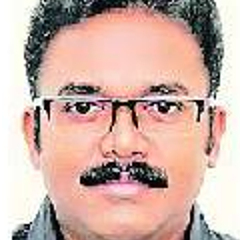The advent of summer has sparked a debate about cloud seeding in Kerala. Soon after chief minister Pinarayi Vijayan told the Legislative Assembly that the state would explore options to induce rains to lessen the impact of drought, the Union Department for Climate Change nixed the idea.
Artificial rains through cloud seeding is an idea first tested by U.S. scientist Vincent Shaefer in 1946. Many countries have tested the costly program. Some countries were successful but many others failed.
Cloud seeding comes into picture when the clouds are unable to precipitate showers. The idea behind the process is simple: certain substances are used to convert the vapor in the clouds to raindrops.
On a clear summer day, the land heats up and the moist atmospheric air goes up. The air expands as it enters the low-pressure sphere, using up its inherent energy and cooling off in the process. This leads to the condensation of vapor.
The micrometer wide drops have to be combined to form a raindrop. This combination is facilitated by dust particles and other aerosols which suspends the tiny drops.
Tiny drops of various sizes are formed within a cloud. The bigger drops fall down and collide with smaller drops to form drops the size of a millimeter. These drops are big enough to be pulled down to earth by gravity.
The collision and subsequent combination of drops do not happen when they are of the same size. In such situations, rain can be induced by cloud seeding. The clouds are scattered with condensers of various sizes. Sophisticated aircraft is used in the process.
Cloud seeding has always had its detractors. The apprehensions included if the substances scattered on the clouds could cause cancer or if the artificial rain could match the quality of the real showers. Various studies have put to rest these fears.
Cloud seeding experiments are done in accordance with the guidelines issued by the World Meteorological Organization (WMO). The amount of substances used for cloud seeding is less than 1 percentage of their natural presence in the atmosphere. In other words, the substances used in cloud seeding are sent up the atmosphere in far greater quantities through other processes.
Cloud seeding is a temporary phenomenon happening in a small area usually less than a 100 square kilometers.
However, cloud seeding is not a solution for drought. The process can be a temporary relief at best in times of an acute spell of drought. This cannot be relied upon on a long-term basis.
The process is too expensive and the outcome uncertain.
Efficient cloud seeding will cost up to Rs 10 crore. The experiment could fail if the clouds drift away after being seeded. These uncertainties pose a challenge.
If it succeeds, it could bring down atmospheric temperature and provide safe drinking water.
(The writer is a research scientist at the Cochin University of Science and Technology’s Advanced Centre for Atmospheric Radar Research)

























